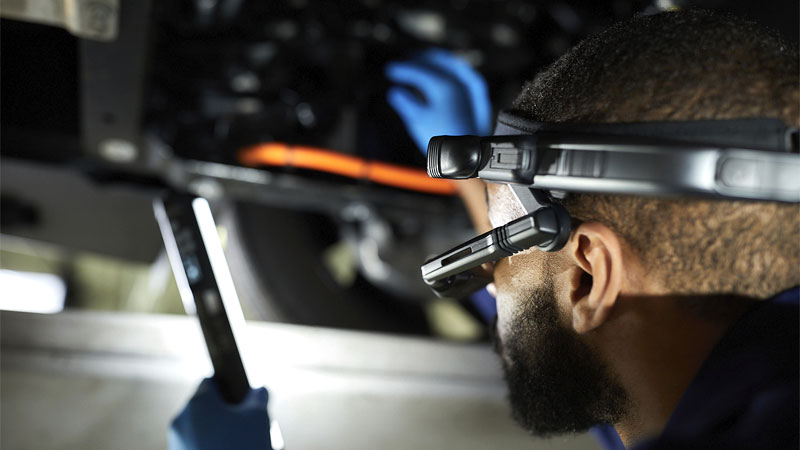With Ford’s recent launch of the F-150 Lightning pickup, the most popular vehicle in North America has gone electric. With 200,000 reservations for the all-electric truck already logged, the release is seen as a bellwether for consumer acceptance of electric vehicles—EVs have officially gone mainstream.
The increasing electrification of the vehicle affects more than driving range and infotainment system options, however; the next phase of digital transformation must extend to the service experience. In fact, perhaps the most significant effect of the transformation of the industry is on dealers and the service technicians they employ. The workforce simply doesn’t have tacit knowledge of the servicing of electric drive trains.
The parts involved are different. For example, there’s no need for an oil or filter changes with an EV. While EVs tend to be more reliable than their legacy counterparts, with less scheduled maintenance, diagnosis and repairs take longer.
In fact, one study found that service technicians spend twice as long diagnosing problems, 1.5 times as long fixing them and incur labor rates 1.3 times higher, with EVs than with internal combustion engines. Service escalations are more prevalent, with many cars having to be moved to a secondary location, which has the potential to increase the cost of service.
Cars are also increasingly living, evolving products that can be updated as issues arise. Consider, for example, Tesla’s 2018 high-profile rollout of a software fix to reduce the braking distance of its Model 3 by up to 20 feet—which means that service techs need to be able to keep up with the changes.
Training technicians on these reimagined, continually evolving cars will be a significant undertaking for the industry. Dealers employ more than 230,000 of the 620,000 automotive service technicians and mechanics in the U.S. alone, and bus and truck mechanics add another 250,000 to the total workforce in the country, according to the Bureau of Labor Statistics.
Introducing Assisted Reality
Against this backdrop, a growing number of dealers are leveraging the power of assisted reality to train new and existing workers to service cars with a greater number of electric components. Assisted reality is not unlike a heads-up display car dashboard that provides critical information at a glance.
Unlike augmented reality and virtual reality technologies, assisted reality allows frontline workers to have full situational awareness while viewing a screen within their immediate field of vision, hands-free. Automakers from Ford (our most recent and largest global deployment, in partnership with TeamViewer and Tech Mahindra) and BMW to the Volkswagen Group UK and Mercedes Benz Turkey are already leveraging assisted reality wearables to:
- Provide access to remote experts, digital workflows and technical manuals: Assisted reality wearables enable service technicians to quickly diagnose and resolve issues while gaining real-world exposure to new technology and components.
- Streamline the annual testing process: The annual inspection process can be quite manual and can vary significantly, depending on whether standard or electric vehicles are involved. Assisted reality wearables can help make the process more efficient by providing step-by-step instructions and automating how data is collected and recorded.
- Reduce emissions: For industry players facing increased pressure to act on their carbon footprint, assisted reality wearables help them not only reduce the travel time and cost associated with repairs and training but also reduce carbon emissions, with no negative impact on collaboration.
Future Outlook
So, what might the service experience of the near future look like? As cars are increasingly digitized, carmakers are positioned to collect an increasing amount of data. The question remains as to how that continuous data collection opportunity will be used to enhance the service experience.
With predictive maintenance a service technician can be armed with pre-ordered parts. Assisted reality wearables could retrieve in-vehicle analytics by scanning the car’s VIN and then deliver heads-up guided instructions, enabling service departments to get cars in and out more quickly.
A digital twin of the vehicle can track changes and upgrades over the life of each vehicle, so hands-free work instructions can be tailored to that unique car, as we’re already seeing with large commercial vehicles.
This is like personalized medicine for the vehicle. Rather than simply changing an air filter because that’s statistically what the car might need, the dealer can perform only those repairs that are actually needed for that car and do so more efficiently. The result… an entirely different service experience, with faster, more streamlined repairs, a more skilled workforce and happier customers.


